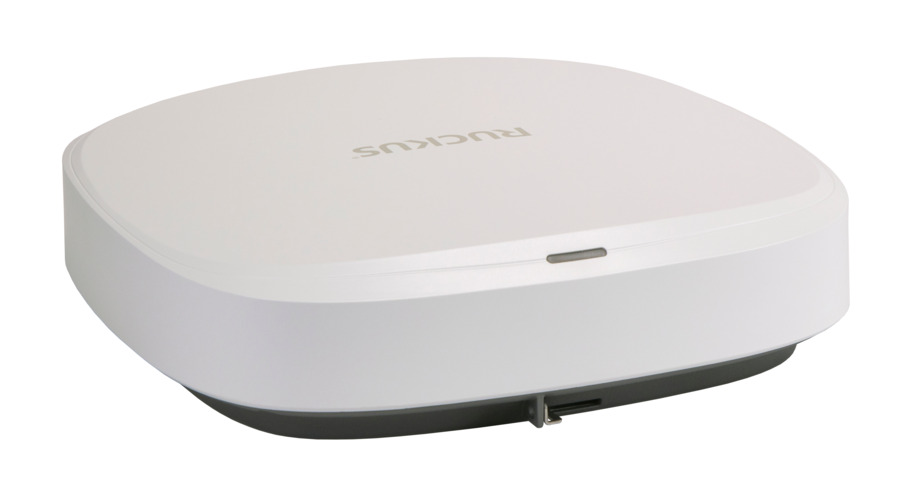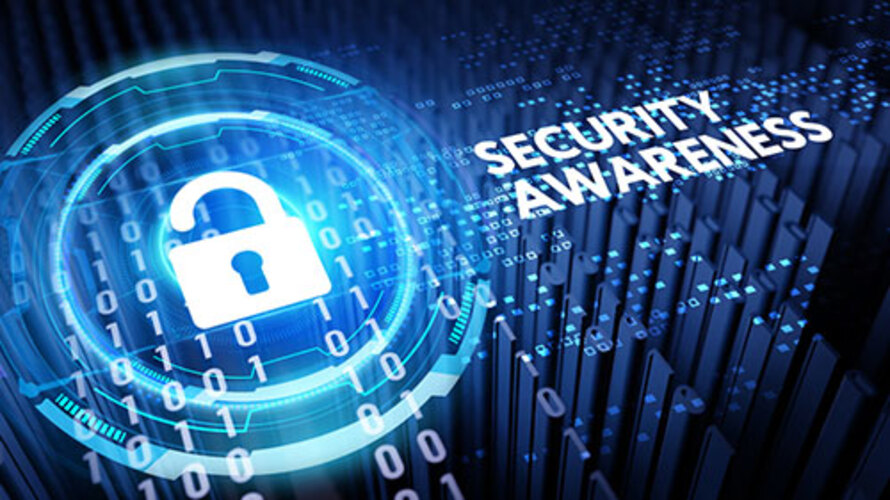Bienvenue chez RUCKUS Networks, qui fait partie du portefeuille mondial de solutions réseau de CommScope. En savoir plus.
The European Union has put forth the NIS2 Directive as a central regulation for safeguarding "essential" and "important" sectors across all of its member states. Expanding on the initial NIS Directive, NIS2 broadens its reach and raises security expectations for critical sectors, including healthcare, finance, energy, and more. It mandates enhanced cybersecurity measures, from risk management and incident response to supply chain security, network security, and business continuity planning.
In this blog, we focus on how NIS2 drives the need for secure networks and how RUCKUS® solutions and products can help companies align with NIS2 mandates.
NIS2 Directive's Network Security Implications
NIS2 comprises ten main categories, which were highlighted in part 1 of this blog series, NIS2 Directive Explained: Strengthening Network Security. Focusing on the network security aspect, NIS2 requirements can be broken down into a number of key requirements:
- Closely manage networks, configurations, roles, and privileges.
- Implement and enforce secure controls and security measures for network access and allowing users to connect.
- Utilize least privilege roles while managing the network.
- Follow, maintain, and update documented and proven processes for making network configuration changes and taking maintenance actions.
- Keep firmware and software up-to-date so the latest security vulnerabilities are addressed.
- Maintain and update network asset inventory.
- Configure wired and wireless networks to use the latest encryption for added security.
- Configure and monitor networks with automated notification of potential security incidents.
- Business continuity - ensure the network still functions even during security incidents.
NIS2 and RUCKUS Approach to Zero Trust Architecture as the Connectivity Solution
The network protections mandated by NIS2 may align with many of the principles of a zero-trust architecture (ZTA). Zero trust, in essence, means that a connection must never be trusted and always be verified. The RUCKUS approach to ZTA resides with the connectivity and access to the network; it involves bringing together devices and software to address the necessary components for a Zero Trust model, focusing upon access to the network and network elements. A comprehensive Zero Trust environment implements end-to-end protection by incorporating additional layers, including endpoint security, application-layer controls, and continuous identity verification.
Unlike traditional security models, zero trust assumes no implicit trust within the network and continually verifies connections to mitigate cybersecurity risks from unauthorized access or insider threats. Through robust user and device authentication, network segmentation, and continuous monitoring, RUCKUS provides the capabilities for network activity to be protected, providing organizations with a secure and scalable connectivity solution that aligns with their NIS2 compliance requirements.
Following a Zero Trust approach checks the boxes on the key NIS2 requirements listed previously, because you have to manage your networks, utilize least privilege accounts, provide secure access mechanisms to information systems, update your systems and software for security vulnerabilities, utilize encryption, and all the rest to protect your network.
RUCKUS One® Solution
The RUCKUS One cloud-based platform is designed to streamline network management and control for both wired and wireless networks, in line with NIS2 compliance. By centralizing network operations, the RUCKUS One solution provides IT administrators with a unified interface to manage all RUCKUS network components for seamless integration and coordination. Leveraging advanced AI and analytics to optimize network performance, the platform can detect anomalies and provide actionable insights. This not only enhances the efficiency of network management but also addresses requirements for robust and resilient networks to protect against potential cyber threats.
A key strength of the RUCKUS One solution is its comprehensive identity management capabilities. The platform allows organizations to map identity provider identities and groups (for example from a SAML IDP such as MS Entra) directly to RUCKUS One identity groups and identities. This integration requires that all devices on the network are associated with a verified identity, enabling adaptive policies that can reference these identity groups for granular network access control. This identity-centric approach is fundamental to implementing a zero trust security model to in line with NIS2.
The RUCKUS One solution also features built-in PKI (Public Key Infrastructure) capabilities, allowing it to issue device certificates through integration with Mobile Device Management (MDM) solutions such as Microsoft Intune or via self-service web portal workflows. This certificate-based authentication significantly enhances security by providing a stronger authentication method than traditional passwords.
For incident detection and response, the RUCKUS One solution integrates powerful AI capabilities that continuously monitor network behavior to identify potential security events, supporting overall security management strategies. When anomalies are detected, the system can automatically trigger alerts and send detailed information via webhooks to Security Information and Event Management (SIEM) systems or IT service management platforms. This integration capability is crucial for organizations that need to meet 24-hour incident reporting requirements, as it enables rapid escalation and documentation of security events, in line with NIS2.
The RUCKUS One solution offers a suite of features designed to protect network integrity and provide secure access in line with NIS2 requirements. These include:
- Secure Access: Implements role-based access control so only authorized users can access sensitive network resources.
- Multi-Factor Authentication (MFA): Configured for RUCKUS One network administrators, adds an extra layer of security by requiring network administrator users to verify their identity through multiple methods before gaining access.
- Automatic Updates: Updates network devices to the latest firmware for the latest security patches and software versions, reducing vulnerabilities and supporting cybersecurity risk management.
- Deep Analytics for Network Monitoring and Alerting: Offers real-time insights into network performance and security, allowing administrators to proactively address issues and receive alerts for any suspicious activities.
- Consistent Security Policy Enforcement: Deploy and manage security configurations uniformly across all network devices, removing security gaps from inconsistent implementation.
- Network Segmentation: Easily implement VLAN/VXLAN policies to isolate critical systems and contain potential breaches, preventing lateral movement by attackers.
The RUCKUS One solution integrates RUCKUS AI™ capabilities, providing proactive risk management through machine learning that transforms network data into actionable security insights. These AI features are seamlessly available through the RUCKUS One interface, offering anomaly detection, preemptive issue resolution, and root cause analysis without requiring a separate management system.
While the RUCKUS One solution addresses critical network-focused controls, organizations should also implement policies, staff training, and incident response procedures to fulfill the broader NIS2 requirements and protect sensitive information.
RUCKUS Secure Access and Authentication with Cloudpath™ Enrollment System
One distinct solution RUCKUS provides for managing secure access and assigning the right roles and controls to a user or device is the Cloudpath Enrollment System. As previously mentioned, device onboarding and secure access are core components where endpoint security is paramount.
RUCKUS Cloudpath Enrollment System offers an advanced solution for secure network onboarding by simplifying and securing the authentication process. The Cloudpath system verifies the identity of devices and users connecting to the network, providing that only authorized endpoints have access. With the Cloudpath enrollment system, organizations can implement role-based access control, automate certificate management, and simplify credential handling
A standout feature shared by both the Cloudpath and RUCKUS One solutions is Dynamic PSK™ (Pre-Shared Keys) technology. Dynamic PSK technology provides an optimal balance of security and ease of use by allowing multiple keys/passwords to be used for the same network while enabling dynamic policy application. Unlike traditional pre-shared keys, Dynamic PSK technology restricts each password/key to a single device or a set of devices belonging to a specific user, significantly enhancing security without adding complexity for end users.
It's important to note that many of the Cloudpath system's core functionalities are integrated directly into the RUCKUS One solution, including certificate management, secure onboarding workflows, and Dynamic PSK capabilities. This integration enables organizations to access these powerful security features through a single, unified management interface if they choose to deploy the RUCKUS One solution.
RUCKUS Focus on Business Continuity Through Resilient Access Points
A key focus of NIS2 is ensuring business continuity and cyber resilience, particularly during cyber incidents or operational disruptions. RUCKUS Access Points (APs) are designed with this priority in mind, allowing continuous connectivity even if access to the central controller is temporarily interrupted. With this resilient architecture, RUCKUS APs can manage traffic and maintain network stability independently, ensuring that critical services remain operational in the event of a network outage or controller downtime.
RUCKUS Focus on Supply Chain Security
RUCKUS prioritizes supply chain security to be in line with NIS2 by implementing rigorous controls across its software and physical supply chains. RUCKUS enforces strict supplier assessments, contractual security requirements, continuous monitoring, and robust incident response planning. Advanced technologies like AI and IoT enhance visibility and threat detection, while secure device architecture, including Trusted Platform Modules (TPM), safeguards firmware and software integrity. These proactive measures mitigate supply chain risks, reinforcing the security of RUCKUS products. Reference the RUCKUS Supply Chain Security document for more information.
RUCKUS Built-In Security Standards and Certifications
RUCKUS's commitment to security is demonstrated by its adherence to rigorous industry standards and certifications — a strong assurance for organizations aiming for NIS2 compliance. RUCKUS designs its products and cloud services with globally recognized cybersecurity frameworks in mind. For example, RUCKUS is an active participant in the StateRAMP (now GovRAMP) program in the United States, which aligns cloud offerings with the NIST 800-53 security controls (a widely respected standard for cybersecurity).
The RUCKUS One, RUCKUS AI, and Cloudpath solutions are all listed in the StateRAMP authorization program, meaning they are undergoing rigorous third-party assessments for confidentiality, integrity, and availability of data. This alignment with NIST-based frameworks underscores that RUCKUS solutions follow best practices for encryption, identity management, vulnerability patching, and other security processes.
Additionally, many RUCKUS networking products carry certifications that attest to their security at the hardware and software level. For instance, RUCKUS's wireless access points, switches, and the Cloudpath software have achieved FIPS 140-2/3 validations (NIST Cryptographic Module Validation Program) and Common Criteria (NIAP) certifications (recognized by many EU member states), which are often prerequisites for use in government and mission-critical environments. These certifications confirm that RUCKUS implements robust encryption modules and secure software development practices. Additionally, as the EU Cybersecurity Certification Scheme (EUCC) evolves, RUCKUS remains committed to aligning its products and services with emerging EU-specific certification requirements.
Conclusion
As NIS2 reshapes cybersecurity expectations across Europe, RUCKUS delivers a robust suite of solutions to assist essential and important sectors. From implementing zero-trust architectures to facilitating resilient access points and enhancing the security of its supply chain, RUCKUS stands as a trusted partner for organizations aiming to achieve compliance and protect their networks.
The RUCKUS One solution provides a unified management interface that brings together powerful capabilities for identity management, secure access control, and AI-driven network intelligence. By centralizing these functions in a single platform, organizations can more easily implement and maintain the comprehensive security controls required by NIS2 while reducing operational complexity. The integration of advanced features like identity-based policy enforcement, certificate management, and Dynamic Pre-Shared Key technology enables a true zero-trust approach to network security without sacrificing usability.
The landscape of cybersecurity, understanding of NIS2 directives, and best practices for implementing these requirements are continually evolving, and RUCKUS is committed to evolving with them. RUCKUS equips organizations with the tools and strategies needed to secure their operations and safeguard data.
FAQs
Ultimately, each organization has to understand the risk management and assessment requirements from the NIS2 Directive and apply them to their network management policies and procedures. NIS2 compliance requires comprehensive policies and the ability to prove that the controls are in place to secure the network through access control measures, vulnerability scanning, data protection, cyber incident capture and reporting, basic cyber hygiene practices, and security training.
Specifically for NIS2, organizations must implement network security controls that include vulnerability management, intrusion detection and reporting, data encryption at rest and in transit, strong access control and account management such as MFA (just to name the top ones).
These must be supported by non-system controls as well, including organizational information security policies, risk management plans, incident response plans, secure supply chain and reporting, and cybersecurity training.
RUCKUS switches and APs implement the security requirements to support the network-specific NIS2 requirements for wired and wireless security. Implementing secure network functions such as multi-factor authentication, VLAN segmentation, strong encryption (such as WPA3™ on access points or AES-256Sec, Secure Shell v2 (SSH), and MACSec on switches), access control with least privilege for network management functions, and other such secure features support overall NIS2 compliance. Ultimately, any company who must demonstrate NIS2 compliance must show how they meet all ten categories of the NIS2 Directive.
The RUCKUS One solution is an important part of the network security component for NIS2 compliance. By itself, no one product will make a company NIS2 compliant. Implementing the RUCKUS One solution for its security features, network control and management, secure access, support of MFA, automatic updates, and deep analytics, not to mention customer tenant separation and protection, make the RUCKUS One solution an excellent choice for addressing many of these critical NIS2 network requirements. Additionally, the RUCKUS One solution's integrated identity management and PKI capabilities further strengthen its alignment with NIS2 requirements for secure authentication and access control. Ultimately, any company who must demonstrate NIS2 compliance must show how they meet all ten categories of the NIS2 Directive.
RUCKUS SmartZone network controllers are an important part of the network security component for NIS2 compliance. By itself, no one product will make a company NIS2 compliant. Implementing SmartZone or virtual SmartZone controllers for its security features, network control and management, secure access, support of MFA, and ability to push out the latest security updates, make SmartZone controllers an excellent choice for customers. SmartZone customers can also add RUCKUS AI as an additional component to enhance their security and monitoring capabilities. Ultimately, any company who must demonstrate NIS2 compliance must show how they meet all ten categories of the NIS2 Directive.
RUCKUS One and RUCKUS AI solutions provide real-time monitoring, anomaly detection, and alerting capabilities that help organizations identify potential security incidents quickly. The platform supports webhooks that can push detected incidents directly into SIEM or ticketing systems, enabling rapid escalation and response workflows. These integration capabilities enable organizations to meet NIS2's strict incident reporting timelines while maintaining comprehensive documentation of security events for compliance purposes.
An entity located outside of the EU is still required to be compliant with NIS2 if it provides services or in other ways falls within the NIS2 Directive. RUCKUS recommends that you seek legal counsel to determine the extent of your compliance requirement and any other obligations, as a foreign entity, that you may have to meet to comply with the NIS2 Directive.
©2025 CommScope, LLC. All rights reserved. RUCKUS, CommScope and the CommScope logo are registered trademarks of CommScope and/or its affiliates in the U.S. and other countries. For additional trademark information see https://www.commscope.com/trademarks. WPA3 is a trademark of the Wi-Fi Alliance. All product names, trademarks and registered trademarks are property of their respective owners.
Get ahead with RUCKUS Networks!
Sign up for exclusive insights from RUCKUS Networks.











